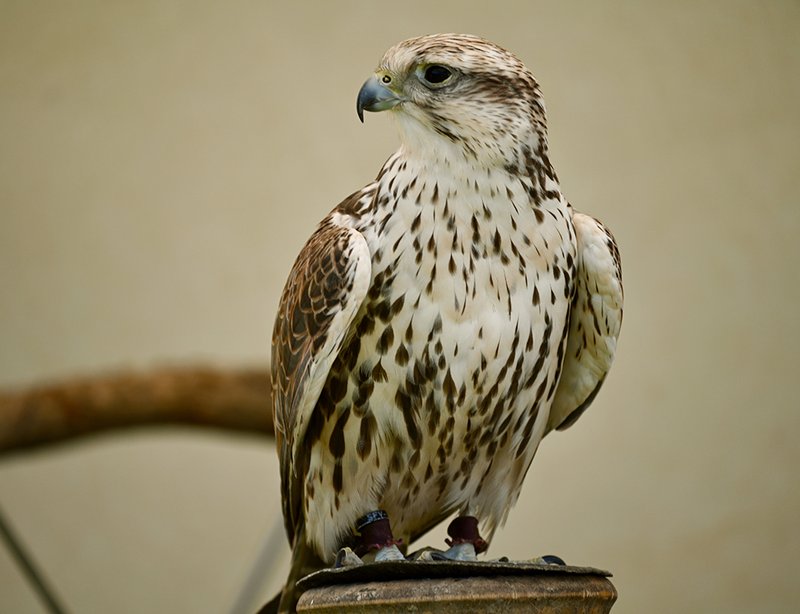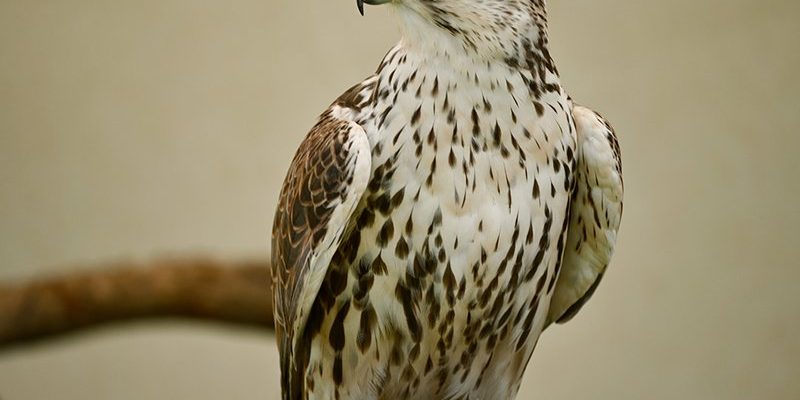
Imagine sipping coffee while I share with you the journey of this remarkable bird. From its ancient beginnings to the challenges it faces today, understanding the evolution of the Saker falcon reveals much about our relationship with nature. So, grab a comfy chair as we dive into its captivating history and ecology.
Origins of the Saker Falcon
The Saker falcon has roots that stretch back thousands of years. Originally found in the vast Eurasian steppes, it thrives in open landscapes, favoring areas that are relatively undisturbed by human activity. Fossil records suggest that the lineage of falcons dates back around 60 million years, with species like the Saker evolving to adapt to their environments.
You might be wondering what sets the Saker falcon apart from other falcons. For one, it’s larger than most of its cousins, with a wingspan that can reach up to 50 inches. Its plumage is stunning, often showcasing a mix of brown, cream, and russet colors. This unique pattern helps it blend into its surroundings, making it an effective predator. Imagine a skilled hunter dressed in a perfect camouflage outfit—it’s all about getting close to prey without being detected.
Throughout history, the Saker falcon has been mentioned in various ancient texts, illustrating its significance in different cultures. In medieval times, it was highly prized for falconry, a sport that involved training birds of prey for hunting. This relationship with humans not only influenced the bird’s survival but also contributed to its evolution.
Habitat and Range
Saker falcons inhabit a variety of environments, but they particularly thrive in open grasslands, agricultural fields, and even mountainous regions. Their range stretches from Eastern Europe and Central Asia to parts of the Middle East. This diverse habitat allows them to hunt a wide range of prey, from small mammals to birds.
Understanding their habitat preferences is crucial for conservation efforts. Sakers need a balance of open spaces for hunting and suitable nesting sites, which are often found in trees or cliff ledges. As humans increasingly develop these areas for agriculture or urban expansion, the Saker falcon faces significant challenges. With less natural habitat, their populations decline, and this is where we need to step in.
Over the years, various conservation programs have emerged to protect Saker falcons and their habitats. These initiatives aim to maintain the delicate balance between humans and wildlife, ensuring that future generations can appreciate the beauty of these birds. Honestly, if we don’t act now, we risk losing not just the Saker falcon but also the richness of our natural ecosystem.
Physical Characteristics
One of the most striking features of the Saker falcon is its impressive size. These birds can weigh anywhere from 2 to 4.5 pounds, with females generally larger than males. Their body shape is robust, making them powerful fliers. The wings are long and pointed, allowing them to achieve high speeds during hunting dives.
The Saker’s coloration varies across regions, but it typically sports a mix of dark brown feathers with lighter markings. This pattern is more than just attractive—it serves a purpose. It helps the falcon remain hidden from both prey and potential threats. You could say they wear their environment as a disguise, making them masterful hunters.
Another fascinating aspect of their physicality is their beak. The Saker falcon has a hooked beak, which is perfect for tearing into its prey. This feature allows them to consume a wide variety of animals, from small rodents to other birds. Imagine having a built-in tool that’s not just functional but essential for survival—this is the Saker falcon in action.
Diet and Hunting Techniques
Now let’s talk about how the Saker falcon gets its food. As a raptor, it primarily hunts small mammals and birds. Its diet may include everything from voles to larks, depending on what’s available in their habitat. This adaptability is one of the reasons the Saker is so successful.
Hunting techniques are varied and fascinating. Saker falcons often hunt from a perch, using their keen eyesight to spot potential prey. Once they’ve identified a target, they swoop down at incredible speeds, using sharp talons to catch their meal. It’s a bit like watching a well-executed strategy game unfold—precision, patience, and speed all play essential roles.
Interestingly, these birds can also be trained for falconry. In this ancient practice, skilled falconers train Sakers to hunt alongside them, showcasing their intelligence and remarkable abilities. This symbiotic relationship has deep historical roots and continues to be celebrated in various cultures around the world. Imagine teaming up with one of the fastest creatures in the sky—that’s the thrill of falconry.
Conservation Efforts
Although the Saker falcon is a resilient species, it faces various threats that put its survival at risk. Habitat loss due to agriculture, hunting, and climate change has led to significant population declines in some areas. That said, there are dedicated conservation efforts aimed at protecting this majestic bird.
Organizations worldwide are working hard to monitor Saker populations and restore their habitats. Some projects focus on breeding programs, where young falcons are raised in captivity and later released into the wild. These efforts not only boost the population but also help maintain genetic diversity, which is crucial for long-term survival.
You might be wondering what you can do to help. Supporting wildlife conservation organizations, spreading awareness about the challenges these birds face, or even getting involved in local environmental initiatives are all great ways to contribute. Each small action can lead to significant change, creating a better future for the Saker falcon and other wildlife.
The Saker Falcon in Culture
The Saker falcon holds a special place in various cultures, particularly in the Middle East and Central Asia. It has been revered not just as a skilled hunter but also as a symbol of strength and freedom. Historically, these birds were often presented as gifts to royalty, highlighting their status and importance.
In literature and art, the Saker is frequently depicted alongside themes of nature and beauty. It represents a connection between humans and the wild, reminding us of our responsibility to protect these creatures. Their image graces everything from traditional textiles to modern artwork, showcasing the lasting impact they have had on cultural identity.
Moreover, falconry is celebrated as an integral part of cultural heritage in many regions. The sport is not just a pastime; it’s a way to foster a deeper understanding of the natural world. By learning about the Saker falcon and its habits, people can better appreciate the delicate balance of ecosystems and the importance of environmental stewardship.
The Saker falcon tells a story of resilience, adaptability, and the intricate dance between humans and nature. From its origins in the expansive steppes to its role in falconry and culture, this bird captures our imagination and inspires us to take action for its conservation. As we continue to face environmental challenges, understanding the history and evolution of the Saker falcon can remind us of the importance of preserving our natural world.
So the next time you see a falcon soaring across the sky, take a moment to appreciate not just its beauty but also the rich history it embodies. Let’s work together to ensure that future generations can enjoy the sight of a Saker falcon in the wild, continuing the legacy of this remarkable bird.

